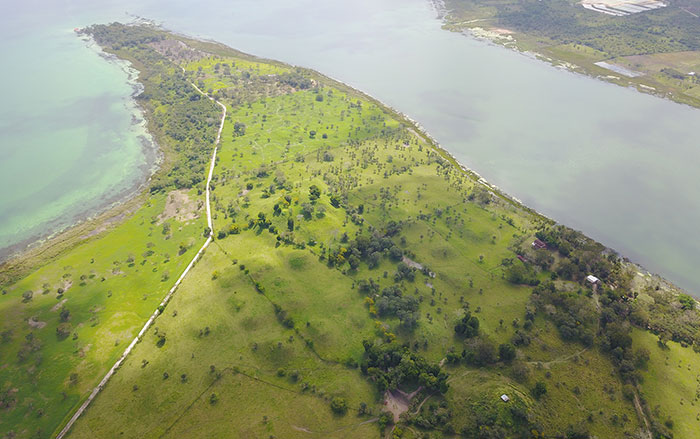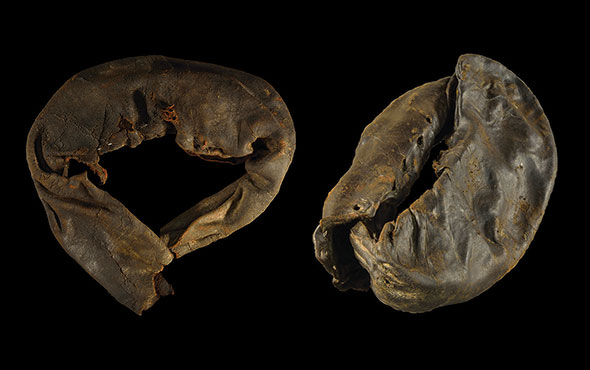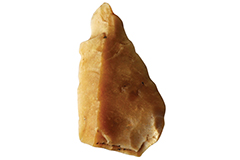
AUSTRALIA

AUSTRALIA: When workers constructing a rail line south of Sydney discovered a trove of Aboriginal artifacts, archaeologists at first were baffled. Many of the stone tools were crafted from flint, which is not native to the area. A subsequent investigation concluded that the flint was actually chemically identical to samples found along the Thames River in London. The flint cobbles were likely loaded onto ships in England for ballast and then discarded in Australia, where they were repurposed by Aboriginal artisans.
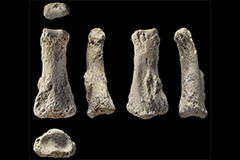
SAUDIA ARABIA

SAUDI ARABIA: A finger bone from the Al Wusta site in the Nefud Desert is again changing the story of how and when modern humans dispersed from Africa. Dating to between 85,000 and 90,000 years ago, it is the oldest Homo sapiens fossil ever found outside of Africa and the Levant. It was once thought that humans migrated out of those areas only around 65,000 years ago, but this new discovery suggests that they had already arrived in the Arabian Peninsula and, likely, other places, earlier than that.

SOUTH AFRICA

SOUTH AFRICA: Lidar technology helped relocate a lost settlement in the Suikerbosrand hills south of Johannesburg. The Tswana-speaking city thrived from the 15th to the mid-19th century before civil wars caused its collapse. Although previous excavations had exposed some ruins in the area, the full extent of the site was unknown until now. The temporarily named SKBR settlement was once spread across a 6-mile-long area and contained as many as 850 homesteads.

SUDAN

SUDAN: Excavations in Sedeinga uncovered one of the largest collections of Meroitic inscriptions ever found. Known as the “city of the dead,” the 60-acre site housed an important necropolis dating to the kingdoms of Napata and Meroe, which flourished from the 7th century B.C. to the 4th century A.D. Meroitic is the oldest known written language in sub-Saharan Africa, and although it is only partially understood, the newly found inscriptions are funerary in nature and contain biographical information about the deceased.
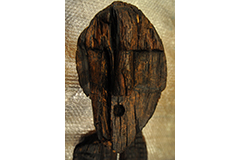
RUSSIA

RUSSIA: Advanced dating techniques have shown that the famous Shigir Idol is an astounding 11,600 years old, even older than previously thought. It is now considered the oldest known monumental wooden sculpture, having been carved near the end of the last Ice Age. The human-shaped larch wood figure was originally pulled from a peat bog in the Ural Mountains in the late 19th century, stands over 17 feet high, and is engraved with zigzag patterns and human faces.

SWEDEN

SWEDEN: What Swedish archaeologists first believed was a giant nut unexpectedly turned out to be the country’s oldest known onion. The charred bulb was discovered near a fireplace at the 5th-century A.D. Sandby Borg ringfort on the island of Öland. Although onions were common in Roman diets, they were not part of Scandinavian cuisine at the time. Because the inhabitants of Sandby Borg maintained close trade links with the Roman Empire, they were able to import the exotic vegetable.
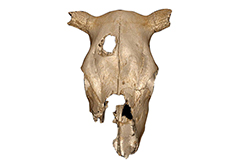
FRANCE

FRANCE: A hole in a 5,200-year-old cow skull is evidence of Neolithic bovine brain surgery. When the cranium was originally found at Champ-Durand, it was thought that the hole was caused by another cow’s horns, but reanalysis confirmed that the aperture’s characteristics are more consistent with trepanation. Experts believe that perhaps the world’s first known veterinarian attempted to save the cow’s life through surgery, or that Neolithic surgeons honed their skills on domestic animals before applying them to human subjects.

SCOTLAND

SCOTLAND: The Roman builders of the Antonine Wall used vibrantly painted sculptures as a propaganda tool to convey Rome’s superiority over native Scottish tribes. When the wall was built in the mid-2nd century A.D., sculpted blocks depicting Rome’s military exploits were periodically embedded into it at strategic locations. X-ray and laser technology has now shown for the first time that they were originally finished with red and yellow paint, which would have enhanced their visual impact.

PERU

PERU: New evidence from the Chimú Empire site of Las Llamas is underscoring just how gruesome was an event that occurred there 550 years ago. The skeletons of 140 children between the ages of 5 and 14 attest to perhaps the world’s largest single episode of child sacrifice. Footprints reveal how the children were dragged to the site before being ritually slaughtered with knife blows to the sternum. Severe weather patterns and flooding may have caused the community to undertake such measures.

NEW MEXICO

NEW MEXICO: Fossilized footprints from a dry lake bed in White Sands National Monument divulge an extraordinary interaction between humans and a ground sloth 10,000 to 15,000 years ago. Human tracks superimposed on the prints of the giant sloth show how people carefully stalked the beast. The sloth’s trail suggests it then employed a series of evasive maneuvers and even reared up on its hind legs, likely to defend itself. It is not known exactly why giant sloths went extinct, but human hunting may have contributed to their demise.









